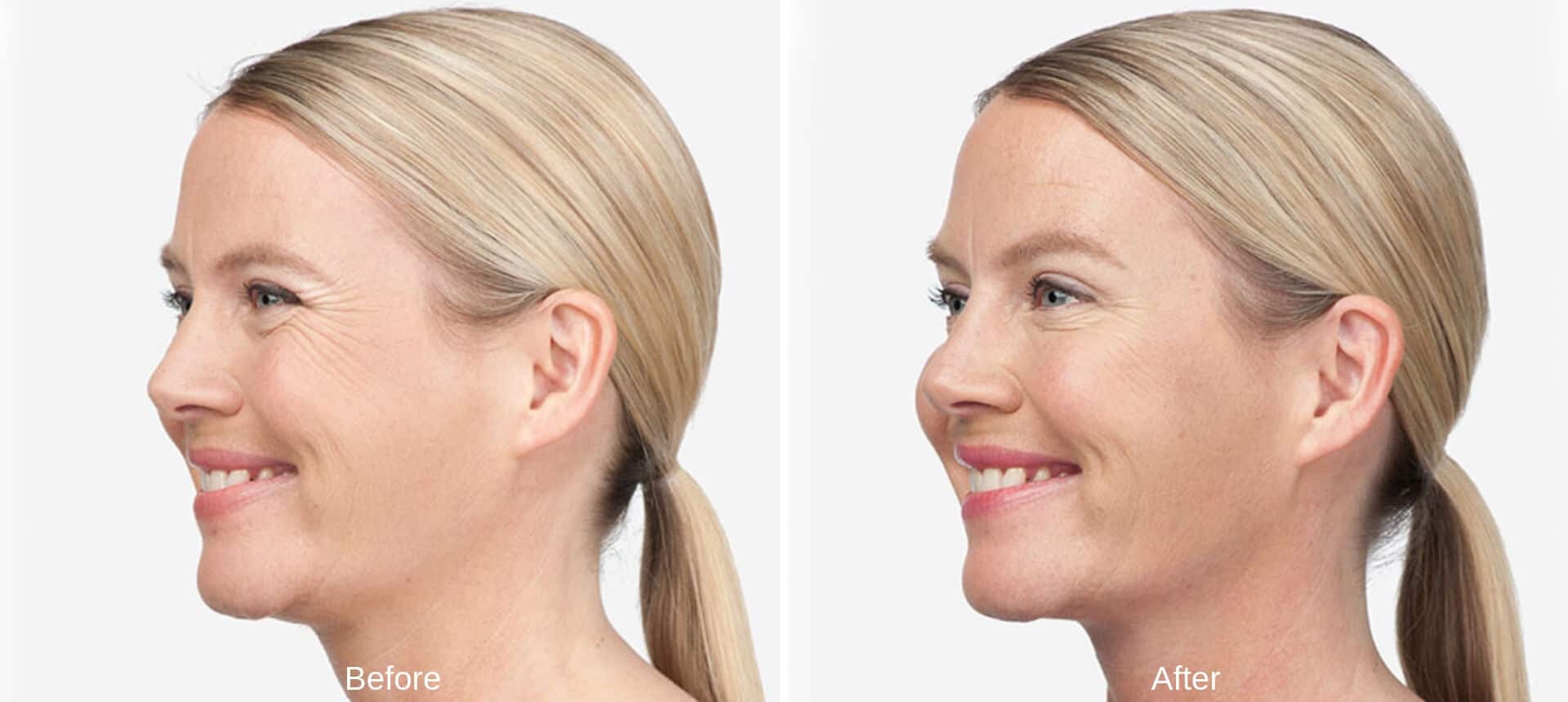
The narrative surrounding Botox (onabotulinumtoxinA) has long been centered on its remarkable ability to smooth away existing dynamic wrinkles—those lines etched by years of facial expression. However, a significant shift in clinical practice and patient inquiry has focused on its potential for prophylactic or preventative use. This involves initiating treatments long before deep, static wrinkles—lines visible even when the face is at rest—have fully formed. The core principle of this preventative approach relies on the mechanism of action of the botulinum toxin itself: by temporarily arresting the muscle contractions responsible for creasing the overlying skin, it prevents the cumulative micro-trauma that ultimately leads to permanent dermal folds. The efficacy of this strategy is not merely anecdotal; it is rooted in dermatological science that recognizes the link between repetitive muscular action and the eventual breakdown of dermal collagen and elastin. To fully appreciate whether Botox can truly prevent wrinkles, one must move past its role as a reparative tool and examine the kinetic forces at play in the aging face and how early, strategic muscle weakening intercepts the process of dermal breakdown.
The Core Principle of This Preventative Approach Relies on the Mechanism of Action
The biological foundation of a dynamic wrinkle is deceptively simple: every time a muscle contracts—whether you frown, squint, or smile—the skin overlying that muscle bunches, folds, and releases. Over tens of thousands of repetitions, this repeated folding creates a structural memory in the dermis. The collagen and elastin fibers, which provide the skin’s youthful resilience, begin to fracture and degrade along these lines of habitual movement. This leads to the line becoming visible even when the muscle is at rest, transforming a dynamic line into a static wrinkle. The core principle of this preventative approach relies on the mechanism of action of the botulinum toxin itself: it blocks the release of acetylcholine at the neuromuscular junction, effectively pausing the communication between the nerve and the muscle. By reducing the intensity and frequency of these contractions, the skin is given a reprieve from the physical trauma, allowing the underlying dermal matrix to remain intact and resist the formation of permanent creases.
Preventing the Cumulative Micro-Trauma That Ultimately Leads to Permanent Dermal Folds
In younger patients, typically those in their mid-to-late twenties or early thirties, the initial lines they observe are predominantly dynamic—they only appear during expression. The preventative use of Botox, often termed “Baby Botox” due to the lower doses used, targets these early, shallow creases. The goal is not to achieve a completely frozen or immobile look, which would defeat the purpose of natural aesthetics. Instead, the strategy aims for a subtle but significant reduction in muscle activity, just enough to discourage the skin from folding deeply. Preventing the cumulative micro-trauma that ultimately leads to permanent dermal folds means treating the cause before the effect becomes indelible. By starting treatment when the skin’s collagen reserves are still robust, the patient effectively enters a holding pattern, deferring the development of static wrinkles until much later in life, and in some cases, potentially avoiding their development entirely in the treated areas.
The Efficacy of This Strategy Is Not Merely Anecdotal
The clinical observations supporting preventative Botox are robust, shifting the conversation from a subjective measure to an evidence-based one. The efficacy of this strategy is not merely anecdotal; comparative studies, where one side of a patient’s face or a twin receives treatment and the other does not, have visually demonstrated the long-term difference in skin quality. The treated areas retain a smoother, more uniform texture, with a notable absence of the deep furrows—such as the glabellar lines (frown lines) or the crow’s feet—that are typically expected to develop with age and muscular activity. This differential aging pattern confirms that the absence of repetitive motion directly protects the skin’s architecture. The key lies in strategic, well-timed intervention that targets the precise muscles of expression that the individual habitually and strongly engages, often identified by the patient’s dominant facial expressions.
Dosage and Precision Are Paramount for a Natural Prophylactic Result
The technique for preventative treatment diverges significantly from that used for corrective purposes. When treating established static wrinkles, the aim is often maximum muscle relaxation to allow the dermal folds to flatten as much as possible. Conversely, in preventative treatments, dosage and precision are paramount for a natural prophylactic result. The required dose is often lower, aimed at achieving a modulation of muscle movement rather than complete paralysis. This requires the injector to have a keen understanding of facial anatomy and aesthetic proportion, ensuring that the reduction in muscle force is just enough to protect the skin without sacrificing expressive capacity. Over-treating a younger face can lead to an unnatural, expressionless appearance that counteracts the goal of subtle, natural aging. The focus is on identifying and mitigating the strength of the habitual movement, not eliminating movement altogether.
The Chronicity of the Treatment Schedule Must Be Understood
For Botox to truly act as a preventative measure, the treatment cannot be a one-time event. The chronicity of the treatment schedule must be understood by both the provider and the patient. Since the toxin’s effect is temporary, wearing off as new synaptic connections are formed (typically every three to six months), consistent, regular re-treatment is necessary to maintain the arrested muscle movement. Allowing the muscle to regain full function for extended periods defeats the preventative objective, as the skin is then once again subjected to the creasing forces that lead to dermal trauma. This commitment to an ongoing schedule requires a financial and temporal investment, transforming the treatment from an occasional cosmetic procedure into a component of long-term skin maintenance, much like regular dental cleanings or the daily use of sunscreen.
Genetic Predisposition and Lifestyle Factors Remain Influential
While Botox addresses the mechanical cause of dynamic wrinkles, it is not a shield against all aspects of the aging process. Genetic predisposition and lifestyle factors remain influential in overall skin aging. A patient with a strong genetic tendency toward collagen degradation will still experience dermal thinning and volume loss regardless of their Botox use. Furthermore, environmental and lifestyle factors such as chronic sun exposure, smoking, and poor nutrition significantly accelerate the breakdown of collagen and elastin—processes Botox cannot reverse or fully stop. Therefore, the best preventative strategy integrates targeted muscle relaxation with comprehensive skin protection, including high-factor, broad-spectrum sunscreen, topical retinoids to stimulate collagen production, and antioxidants. Botox addresses one piece of the aging puzzle, not the entire picture.
Botox Cannot Address the Wrinkles Caused by Volume Loss
It is essential to distinguish between the wrinkles Botox can prevent and those it cannot. Botox cannot address the wrinkles caused by volume loss or gravity. As we age, the fat pads in the mid-face atrophy, and the underlying bony structure recedes. This loss of structural support leads to skin laxity, folds, and jowling, which are static wrinkles driven by gravity and volume deficiency, not muscle contraction. Nasolabial folds (smile lines) and marionette lines are examples of creases that are predominantly caused by these structural changes and are best treated with dermal fillers to restore volume or through surgical lifting, not with Botox. Understanding this limitation prevents the misapplication of the treatment and ensures that patients maintain realistic expectations about what preventative Botox can and cannot achieve in the context of global facial aging.
Addressing Hyper-Functional Muscles Before Lines Deepen Is the Strategic Advantage
The ideal candidate for preventative Botox is a young adult who exhibits hyper-functional muscles during expression—a tendency to frown strongly or squint often—but whose face is currently free of deep, static lines. Addressing hyper-functional muscles before lines deepen is the strategic advantage of this prophylactic approach. It is an investment in the future quality of the skin. Conversely, attempting to use Botox alone on a patient who already possesses deep static lines will yield limited results, as the underlying dermal damage is already established. In those cases, Botox will soften the line by reducing movement, but the established fold often requires concomitant treatments, such as fillers or skin resurfacing, to physically repair the damaged dermal collagen. The younger the age at which the habit of strong expression is mitigated, the greater the skin protection afforded.
The Potential for Long-Term Atrophy in Targeted Muscle Groups
An area of ongoing research and discussion in preventative Botox relates to the long-term impact on the treated muscle tissue. The potential for long-term atrophy in targeted muscle groups is a biological consequence of prolonged disuse. When a muscle is continually relaxed through Botox injections over many years, some degree of muscle wasting (atrophy) can occur. While this is often viewed positively in the glabella, as it reduces the muscle’s strength and the eventual need for higher doses, it raises questions about potential subtle changes in overall facial contour or expression dynamics over decades. Experienced practitioners manage this risk by using the lowest effective dose and occasionally adjusting treatment areas, ensuring that the preventative benefits are weighed against the theoretical long-term changes in muscle bulk and function, maintaining the most natural-looking facial mobility possible.
Informed Consent Must Include Realistic Discussions About Permanence
Because preventative Botox represents a long-term commitment to a recurring medical procedure, informed consent must include realistic discussions about permanence and the expected rate of recurrence. Patients must understand that the smooth skin they achieve while under the influence of the toxin will gradually revert to its pre-treatment state once the effect wears off, and the habitual movements resume. It is a maintenance program, not a permanent cure. Furthermore, the discussion must cover potential side effects, the need for adherence to the re-treatment schedule, and the understanding that new static lines may still form outside the treatment areas due to gravity or other, non-muscular aging forces. Managing expectations for a procedure focused on prevention rather than immediate correction is the cornerstone of ethical aesthetic practice.
